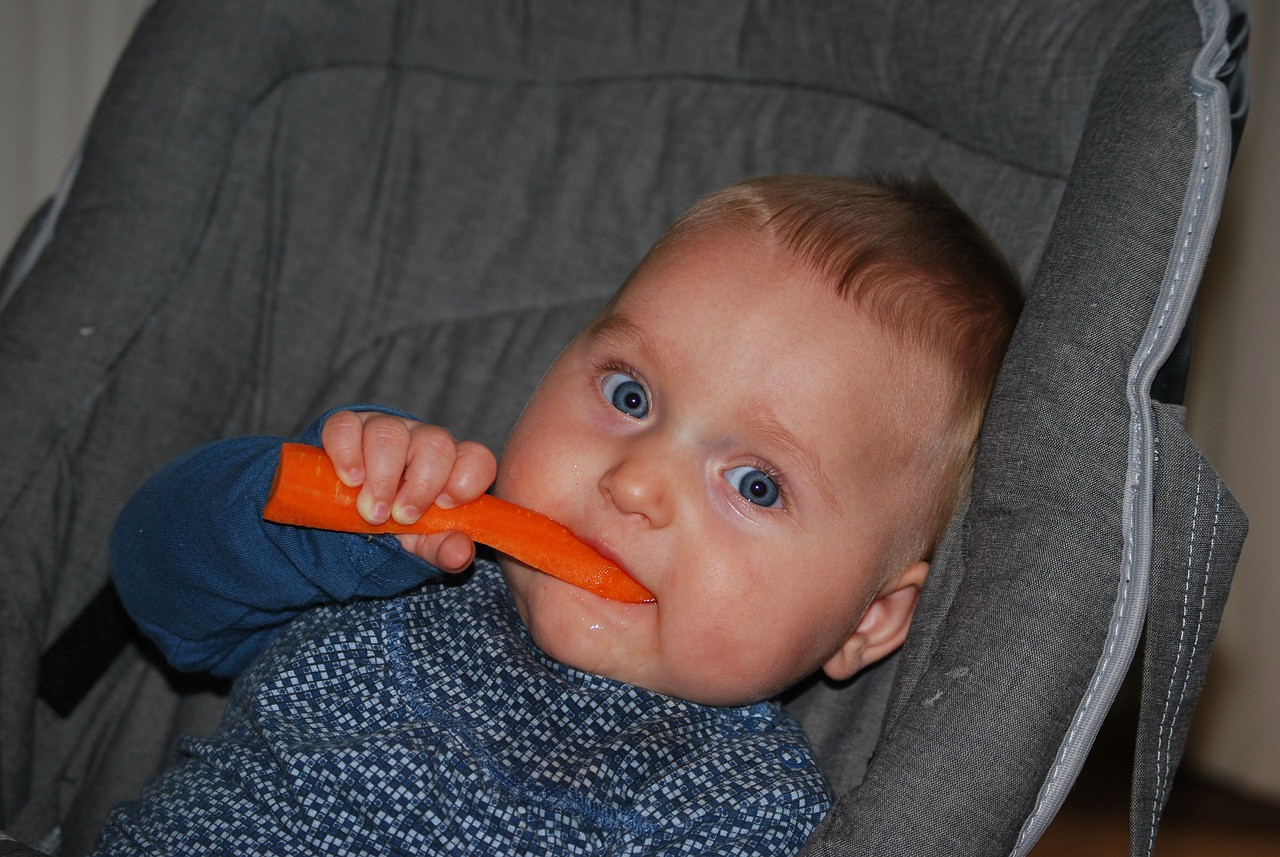As a parent, few things can tug at your heartstrings like seeing your little bundle of joy struggle with congestion and stuffiness. Whether it's from a common cold, allergies, or other respiratory issues, dealing with a stuffy baby can be challenging. While over-the-counter medications may not be suitable for infants, there are gentle and natural remedies that can provide relief. In this blog post, we'll explore ways to support your baby and help them breathe easy again.
Understanding Baby Stuffiness:
Babies are more susceptible to congestion than adults due to their smaller nasal passages and developing immune systems. Common causes of stuffiness in babies include:
1. Colds and Viral Infections: Just like adults, babies can catch colds and other viral infections that cause nasal congestion.
2. Allergies: Allergens such as dust, pollen, and pet dander can trigger allergic reactions in babies, leading to congestion.
3. Dry Air: Dry indoor air, especially during colder months when heating systems are running, can dry out your baby's nasal passages, causing discomfort and congestion.
4. Teething: Believe it or not, teething can also cause nasal congestion in babies due to increased saliva production.
Supportive Measures for Baby's Stuffiness:
Now that we understand some of the common causes of baby stuffiness, let's explore ways to provide support and relief for your little one:
1. Humidifier or Diffuser:
Adding moisture to the air can help relieve nasal congestion and soothe your baby's irritated nasal passages. Use a cool-mist humidifier or diffuser in your baby's room, especially at night when congestion may worsen. Make sure to clean the humidifier regularly to prevent the growth of mold and bacteria.
2. Saline Nasal Spray:
Saline nasal spray can help loosen mucus and clear your baby's nasal passages. Hold your baby on their back or upright and gently tilt their head back. Spray the saline solution into each nostril and then keep upright for a few minutes to encourage drainage. Use a nasal aspirator to gently suction out any loosened mucus if necessary.
3. Elevate Your Baby's Head:
Elevating your baby's head while they sleep can help ease congestion. You can do this by placing a folded towel or blanket under the head of the crib mattress or by using a specially designed baby wedge pillow. Ensure that your baby's head is elevated safely to avoid any risks of suffocation.
4. Steam Bath:
Create a steamy environment in your bathroom by running a hot shower with the door closed. Sit in the steamy bathroom with your baby for about 10-15 minutes, allowing the steam to help loosen mucus and clear their nasal passages. Be sure to hold your baby securely and avoid direct contact with hot water.
5. Gentle Nose Suction:
For stubborn mucus that saline drops alone can't clear, you can use a nasal aspirator to gently suction it out. Gently insert the tip into your baby's nostril to suction out the mucus. Repeat as needed, being careful not to insert it too far into your baby's nose. There are several kinds, these and these are my favorites.
6. Warm Baths:
A warm bath can help relax your baby and provide temporary relief from congestion. The steam from the warm water can also help clear their nasal passages. Let your baby splash and play in the water, but always supervise them closely to ensure their safety.
7. Stay Hydrated:
Whether your baby is breastfeeding, formula feeding, or starting on solids, ensuring they stay hydrated is essential for thinning mucus and relieving congestion. Offer plenty of breast milk, formula, or water (if your baby is old enough) throughout the day.
8. Essential Oils:
Use a cool-mist diffuser to diffuse a blend of lavender, lemon, eucalyptus radiata, and/or tea tree essential oils in your baby's room (1-2 drops each). Lavender promotes relaxation, lemon provides a fresh scent, eucalyptus radiata aids the nasal passages in breathing easy, and tea tree adds a little extra. Ensure the diffuser is safely out of your baby's reach and use a minimal amount of diluted essential oils, starting with one at a time to monitor baby's response.
9. Eucalyptus Radiata Chest Rub:
Dilute eucalyptus radiata essential oil with a carrier oil like coconut oil and gently massage it onto your baby's chest. The gentle aroma can help clear nasal congestion and promote easier breathing. Remember to perform a patch test on a small area of your baby's skin before widespread use.
10. Steam Inhalation with Lemon:
Add a drop of lemon essential oil to a bowl of hot (not boiling) water and allow your baby to inhale the steam. The refreshing scent of lemon can help clear nasal passages and provide relief. Always supervise your baby closely during steam inhalation.
11. Acupressure under the toes:
Massaging the toes is very helpful, especially when using the essential oils mentioned above. The nasal passage acupressure points are found on the bottom of the toes.
Precautions:
While essential oils can be beneficial, it's essential to use them safely, especially with young children. These two are often used with older children and adults with no issues, but infants are more sensitive. Here are some precautions to keep in mind:
-Peppermint Oil: Avoid using peppermint essential oil on or near the face of infants and young children under 2 years old, as it can potentially cause breathing difficulties.
- Eucalyptus Globulus Oil: Similarly, eucalyptus globulus essential oil should be avoided in children under 2 years old due to its high cineole content, which can be toxic if ingested or applied improperly.
VapoRub contains Eucalyptus and is not recommended for children under 2 years old.
Dealing with a stuffy baby can be stressful, but with these supportive measures, you can help alleviate their discomfort and help them breathe easy again. Remember to always monitor your baby's symptoms and consult with a pediatrician if you have any concerns, especially if the congestion persists or is accompanied by other symptoms such as fever or difficulty breathing. Wishing you and your baby a peaceful and congestion-free day!
Disclaimer: No part of this is to be taken as medical advice. Please consult your physician.
My blogs contain some affiliate links.
Any purchase made is a blessing to my family at no extra cost to you!
Thank you for supporting us!

Congratulations on the newest addition to your family! As a new mom, you're likely experiencing the joy, wonder, and occasional challenges that come with caring for your precious little one. You may have lost some sleep with the challenge of teething discomfort. Watching your baby go through the pain and discomfort of teething can be heartbreaking, but fear not! There are natural remedies that can provide relief and comfort to your little teether.
1. Amber Necklaces:
Amber necklaces have gained popularity among parents seeking natural teething remedies. The idea is that the amber releases succinic acid, which is believed to have anti-inflammatory properties and can help soothe teething pain. When worn around your baby's neck, the warmth from their body is said to release the succinic acid, providing relief. However, it's important to ensure the necklace is designed safely, with each bead individually knotted to prevent choking hazards.
Copaiba essential oil is derived from the resin of the Copaifera tree, native to South America. It contains beta-caryophyllene, a compound known for its anti-inflammatory properties. Diluting a drop of copaiba oil with a carrier oil such as coconut oil and gently massaging it onto your baby's gums can help reduce inflammation and alleviate teething discomfort. Always remember to consult with a healthcare professional before using essential oils on infants.
Cold can help numb the gums and provide relief from teething pain. Give your baby a chilled teething toy to gnaw on. You can chill teethers in the refrigerator, but avoid freezing them as they can become too hard and harsh on your baby's delicate gums. Silicone or rubber teethers are great options as they are safe for your baby to chew on and easy to clean.
4. Frozen Washcloth:
An easy and inexpensive teething remedy is a frozen washcloth. Simply wet a clean washcloth, twist it, and place it in the freezer for a short while until it's chilled but not frozen solid. The texture of the cloth and the coldness can provide relief when your baby chews on it. Supervise your baby while they use the frozen washcloth to ensure they don't accidentally swallow any loose threads.
5. Homemade Ginger Root Teething gel:
Ginger root is known for its anti-inflammatory properties and can be used to create a soothing teething gel for your baby. To make the gel, start by peeling and chopping a fresh ginger root. Place the chopped ginger in a small saucepan with enough water to cover it, and simmer for about 10 minutes. Strain the liquid and allow it to cool. Once cooled, dip a clean finger or a cotton swab into the ginger-infused liquid and gently massage it onto your baby's gums. The natural properties of ginger can help reduce inflammation and provide relief from teething discomfort. Always test a small amount of the gel on yourself first to ensure it's not too strong for your baby's sensitive gums, and discontinue use if any adverse reactions occur.
6. Breast Milk Popsicles:
If you're breastfeeding, breast milk popsicles can be a soothing treat for your teething baby. Simply pour expressed breast milk into ice cube trays and freeze them. The coldness of the breast milk can help numb your baby's gums while providing them with nourishment at the same time.
7. Gentle Gum Massage:
Sometimes all your baby needs is a little extra love and attention. Gently massaging your baby's gums with a clean finger can help alleviate teething pain. Make sure your hands are clean, and use a gentle circular motion to massage your baby's gums. This can help increase blood flow to the area and provide relief.
Teething can be a challenging time for both babies and parents, but with these natural solutions, you can help ease your little one's discomfort and make the teething process a little smoother for everyone. Remember to always supervise your baby when trying out new teething remedies, and consult with a healthcare professional if you have any concerns. Hang in there, mama—you're doing great!
My blogs contain some affiliate links.
Any purchase made is a blessing to my family at no extra cost to you!
Thank you for supporting us!


In this blog post, we explore three top tips for establishing healthy eating habits for your little one. Firstly, breastfeeding is not just about nutrients, but also creates an emotional connection between parent and baby.
When it comes to introducing solid foods, waiting until your baby has their molars is a clear sign of readiness.
Embracing whole foods is key to a holistic eating experience.
Read more...
Welcome to the world of homemade baby purees! These recipes are designed to make feeding your baby easy and enjoyable as you introduce them to new flavors and nourishment
From sweet potato and apple delight to pear and spinach medley, these recipes offer a delightful variety of flavors and essential nutrients for your little one's developing palate. So let's get cooking and happy feeding!
Read more...

